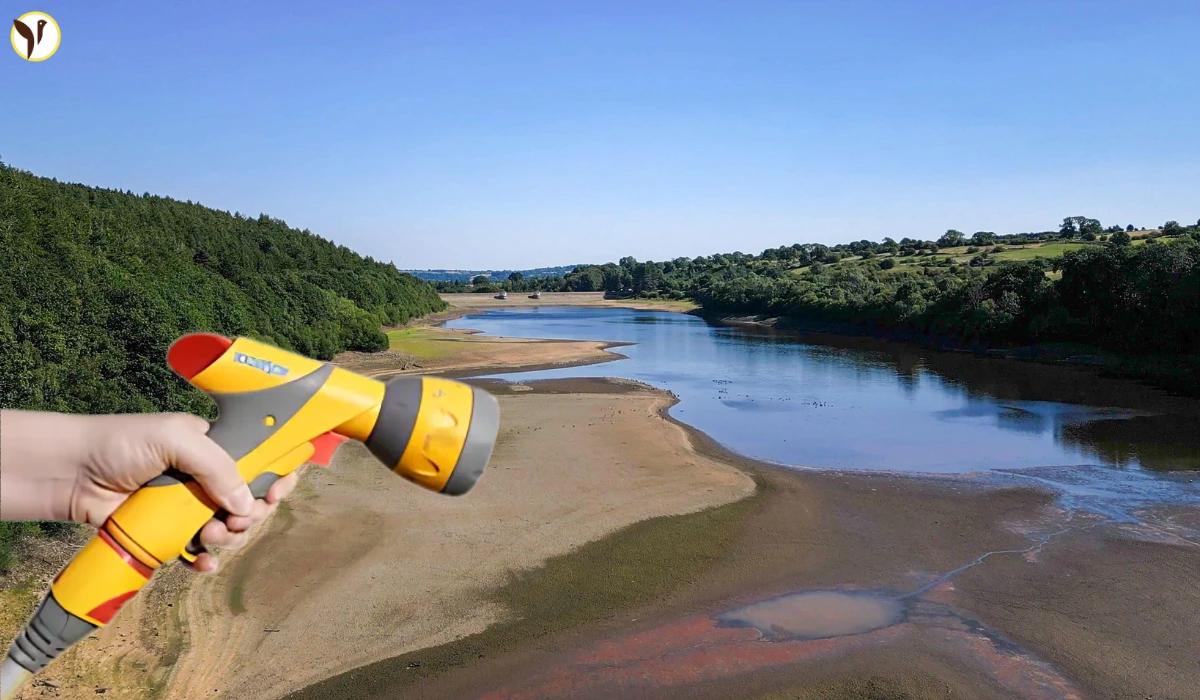Yorkshire Water says a hosepipe ban will begin on July 11 because the region has gone through its driest and hottest spring in 132 years. Reservoirs are at just 56–58 percent, while they usually hold around 82 percent this time of year. The Environment Agency declared a regional drought in June, leaving no choice but to restrict water use.
Why Reservoirs Dropped So Fast
The spring’s dry spell—one of the driest since the 1890s—is the main reason the reservoirs ran out so fast. On top of that, people are using more water than usual in the heat. Yorkshire Water says the network even loses about 20 percent of what’s treated because of leaks before it reaches our taps.
-
They’ve hired around 100 extra leak-repair teams to fix problems fast.
-
They’re also moving water around to balance supply across the region.
But even with these moves, there just aren’t enough reserves to ignore.
What You Can’t Do With a Hose (But What’s Still Allowed)
Under the new ban, householders must stop using hosepipes for:
-
Watering gardens or lawns
-
Washing cars, patios, driveways, bikes
-
Filling kiddie pools, fountains, ponds
What’s still okay:
-
Using a watering can or bucket
-
Filling animal troughs and essential wells
-
Businesses using hoses for medical or essential tasks
-
People with blue-badge permits or medical needs
If you break the ban, beware—Yorkshire Water could fine you up to £1,000. But most likely you'll get a warning first.
Reaction from Yorkshire Water
On X (formerly Twitter)
Yorkshire, starting on Friday 11 July, a temporary use ban (TUB), which is a restriction on the use of hosepipes, will come into effect. This will help our region’s reservoir levels recover and protect Yorkshire's water resources throughout the summer months, following one of the… pic.twitter.com/0StgbUN8i0
— Yorkshire Water 💧 (@YorkshireWater) July 8, 2025
What Yorkshire Water Is Doing Behind the Scenes
Yorkshire Water is more than just banning hoses—they’ve also:
-
Boosted leak-repair crews in vulnerable areas
-
Transported water across the region using extra piping
-
Put in place plans to apply for drought orders if necessary, which would allow them to restrict flows from reservoirs to rivers
These steps show urgency. They all add up to a single message: save water now, before it’s too late.
What This Means for You and Your Community
Every drop counts during droughts like this one. Here are some small things you can do:
-
Take shorter showers
-
Run the dishwasher or laundry only when full
-
Fix dripping taps and leaking toilets—these can lose hundreds of litres daily
-
Set up a water butt to collect rainwater—even in dry times, every bit helps
Some areas are installing water‑efficient devices in public areas—like tap restrictors and rain-alley meter systems—to also curb waste.
A Few Things Nobody’s Talking About (But You Should)
- Wildlife effects: Less water in rivers can negatively impact fish, insects, and riverbanks. Yorkshire Water seeking drought orders would be beneficial for rivers but may impact wildlife downstream.
- Infrastructure over old pipes: The pipe network in Yorkshire is old and even if these pipes are able to be repaired the repair would be just a temporary fix. Removal is the long-term solution and this necessitates funding.
- Water farms & factories: Some local businesses are using rainwater harvesting for anything not drinkable. For sure, this is showing us a glimpse into our water smart future.
- Surge pricing option: There are whispers that Yorkshire Water is preparing to introduce incentives for households that manage to limit their usage below average—like demand-response but for water.
- Reservoir sharing: Neighbouring regions are talking about sharing some spare reservoir space, this could be the first example of regional collaboration for water.
Is This Enough to Break the Drought?
This will ultimately depend on rain. In the next 1 -2 weeks there are forecasts of some Atlantic rain fronts and this could help, but if we do not get any meaningful rain some restrictions could remain imposed through winter. They say we would need rainfall like 2012 to recover fully.
Yorkshire Water’s director, Dave Kaye, said they don’t impose bans unless it’s absolutely necessary. But they’re also pushing real-time leak alerts in customers’ apps—so you can see leaks near your home and report them.
How This Fits into the Bigger Picture
Across the UK, this spring has been the driest since 1956. England’s overall reservoir storage sits at about 84 percent, but Yorkshire is far below that. Other water firms—like Thames and Southern Water—have warned of bans, too, while some regions like Severn Trent say they’re okay for now.
Yorkshire is one of the first major regions to actually impose a ban this summer. If these weather conditions continue, more may follow.
What to Watch Next
-
Check weather updates daily—if 5–10 mm rain falls soon, things might ease
-
Watch Yorkshire Water’s site or app for updates on the drought order
-
Look out for any incentive programs (like water-saving rebates) being offered locally
-
See if your area starts storing green water via community harvest systems
This feels serious. The drought is more than just brown lawns—it’s about protecting our rivers, wildlife, and daily water supply. If we all pitch in, there’s real hope we can ride this out together.









